Okay37F should be fine (anywhere between 33-95F is supposedly fine), but according to their site, 45-55F is ideal.
Navigation
Install the app
How to install the app on iOS
Follow along with the video below to see how to install our site as a web app on your home screen.
Note: This feature may not be available in some browsers.
More options
You are using an out of date browser. It may not display this or other websites correctly.
You should upgrade or use an alternative browser.
You should upgrade or use an alternative browser.
General discussion and questions about my tank because I am noob at this
- Thread starter Amethyst
- Start date
- Tagged users None
is it ok if i forgot to shake the bacteria before adding?37F should be fine (anywhere between 33-95F is supposedly fine), but according to their site, 45-55F is ideal.
Probably.is it ok if i forgot to shake the bacteria before adding?
I added 1 hermet crab and 1 female ghost shrimp. Now i have in my tank some small snails, a hermit crab, a small crab, and two opposite sex ghost shrimp. Only the eyes of the hermit crab and the female ghost shrimp are visible because of how much room there is up and down because of the sand. Any tips on feeding hermit crab and should I clean algae buildup when the hermit crab is there? Also do I feed the hermit crab like a normal crab and do I need to provide it with shells for it to grow intoProbably.
Do you have any pics of the hermit that we could try to ID it from? I personally like trying to figure out specific preferences/needs of individual species to ensure they're getting proper care.I added 1 hermet crab and 1 female ghost shrimp. Now i have in my tank some small snails, a hermit crab, a small crab, and two opposite sex ghost shrimp. Only the eyes of the hermit crab and the female ghost shrimp are visible because of how much room there is up and down because of the sand. Any tips on feeding hermit crab and should I clean algae buildup when the hermit crab is there? Also do I feed the hermit crab like a normal crab and do I need to provide it with shells for it to grow into
If it isn't full grown already, then yes, you will want shells for it grow into (what shells are preferred depends on the individual hermit species; some of them are a lot pickier than others). If you don't know the species, you can get a bunch of different shells to offer the hermits online from places like Reef Cleaners.
For feeding, generally, hermit crabs are omnivores, so you'll want to make sure it has access to both meats and algae, but you should be able feed it just about anything. If you don't know the species, I'd assume bigger feeds are better, as many hermits are predators and/or scavengers in nature and should be able to tear chunks off of bigger foods as needed.
With algae buildup and herbivores/omnivores, you'll want to keep the glass clean so you can see into the tank, and you'll probably want to keep the algae maintained/trimmed but not entirely removed from the rest of the tank (some types of algae get out of hand if not regulated/maintained, and some types of algae - like Green Hair Algae - are generally only palatable to creatures when young/new growth; so they don't typically eat the long algae, but they'll eat the algae "sprouts"). That said, if you're worried about the amount of algae available in your tank, you can always supplement feed algae sheets (like Nori), pellets, or flakes.
the hermit crab has white hairs and the algae is only growing mainly on the backside of the tank glassDo you have any pics of the hermit that we could try to ID it from? I personally like trying to figure out specific preferences/needs of individual species to ensure they're getting proper care.
If it isn't full grown already, then yes, you will want shells for it grow into (what shells are preferred depends on the individual hermit species; some of them are a lot pickier than others). If you don't know the species, you can get a bunch of different shells to offer the hermits online from places like Reef Cleaners.
For feeding, generally, hermit crabs are omnivores, so you'll want to make sure it has access to both meats and algae, but you should be able feed it just about anything. If you don't know the species, I'd assume bigger feeds are better, as many hermits are predators and/or scavengers in nature and should be able to tear chunks off of bigger foods as needed.
With algae buildup and herbivores/omnivores, you'll want to keep the glass clean so you can see into the tank, and you'll probably want to keep the algae maintained/trimmed but not entirely removed from the rest of the tank (some types of algae get out of hand if not regulated/maintained, and some types of algae - like Green Hair Algae - are generally only palatable to creatures when young/new growth; so they don't typically eat the long algae, but they'll eat the algae "sprouts"). That said, if you're worried about the amount of algae available in your tank, you can always supplement feed algae sheets (like Nori), pellets, or flakes.
Do you have any pics of the hermit so we can try to ID it?the hermit crab has white hairs and the algae is only growing mainly on the backside of the tank glass
If the algae is mostly on the back glass and you’re okay with it staying there, then you just need to make sure the hermit crab can get to it (hermits don’t swim, so they need to be able to walk up to the algae).
are all hermit crabs really homicidal? this one is, it killed my shrimps and tried to kill my crab. RIP Male_GhostShrimp. And I had an algae bloom thingy and it was brown my rock snails stuck to the glass had the time of their lives eating all the algae but there were only 2 so the algae took over the tank so i did some cleanup and I can't believe my brother convinced me to keep that hermit crabDo you have any pics of the hermit so we can try to ID it?
If the algae is mostly on the back glass and you’re okay with it staying there, then you just need to make sure the hermit crab can get to it (hermits don’t swim, so they need to be able to walk up to the algae).
Depending on who you ask, pretty much all crabs might be. But yeah, large hermit crabs are known for being aggressive.are all hermit crabs really homicidal? this one is, it killed my shrimps and tried to kill my crab. RIP Male_GhostShrimp. And I had an algae bloom thingy and it was brown my rock snails stuck to the glass had the time of their lives eating all the algae but there were only 2 so the algae took over the tank so i did some cleanup and I can't believe my brother convinced me to keep that hermit crab
I finally got around to feeding it some tilapia because we just got some, it loved itCatfish seems to be a no go, but from what I've read tilapia should be pretty good (no thiaminase and good protein) - it is very lean, though, and it doesn't have as many healthy fats/vitamins as salmon, so you may want to offer some good, more fatty supplementation as well.
@ISpeakForTheSeas
Heyyy hermit is living off of clams from my aquarium on his own! I have taken out alot of the creatures to uncrowd the tank, now its just a bunch of clams in the sand (started at around 30 but now down to 5 because they are Hermits food source), a hermit crab, and 2 sand crabs (mole crabs). I just got a bunch of raw shrimp tails from the store shell on for fishing, I like to leave some food debris on the ground so my powerhead can blow it around the tank and it can be sucked up by the clams and eaten by the hermit crabs little feather things that catch food particles. I just added 2 sand crabs and its cool to watch them pop in and out of the sand. My Hermit crab trusts me fully now and will try to eat anything I give him (even if its not food) sometimes he stops if he doesn't like it like the little rock sucker things he doesn't like oh wait I forgot I still have like 3 pretty snails (the size of a fingernail) and some flat round rock sucker things they stick to rocks and stuff they eat alot of algae from my walls but are really slow. Sorry for taking so long to update alot of things are happening
Questions (2):
1: Can I feed my hermit crab the raw shrimp tails from the store? (I can add details if you want)
2: Do I need to feed to feed my sand crabs anything specific or can they eat only the food debris and algae going around in my tank?
Heyyy hermit is living off of clams from my aquarium on his own! I have taken out alot of the creatures to uncrowd the tank, now its just a bunch of clams in the sand (started at around 30 but now down to 5 because they are Hermits food source), a hermit crab, and 2 sand crabs (mole crabs). I just got a bunch of raw shrimp tails from the store shell on for fishing, I like to leave some food debris on the ground so my powerhead can blow it around the tank and it can be sucked up by the clams and eaten by the hermit crabs little feather things that catch food particles. I just added 2 sand crabs and its cool to watch them pop in and out of the sand. My Hermit crab trusts me fully now and will try to eat anything I give him (even if its not food) sometimes he stops if he doesn't like it like the little rock sucker things he doesn't like oh wait I forgot I still have like 3 pretty snails (the size of a fingernail) and some flat round rock sucker things they stick to rocks and stuff they eat alot of algae from my walls but are really slow. Sorry for taking so long to update alot of things are happening
Questions (2):
1: Can I feed my hermit crab the raw shrimp tails from the store? (I can add details if you want)
2: Do I need to feed to feed my sand crabs anything specific or can they eat only the food debris and algae going around in my tank?
1: Probably - as long as it doesn't have a bunch of random chemicals added, it's most likely fine (just make sure your ammonia and nutrient levels stay in check).Questions (2):
1: Can I feed my hermit crab the raw shrimp tails from the store? (I can add details if you want)
2: Do I need to feed to feed my sand crabs anything specific or can they eat only the food debris and algae going around in my tank?
2: I'm not entirely sure - these aren't typically kept in aquariums (at least not successfully) because they live in the swash zone of the beach, but in they wild seem to eat diatoms, dinoflagellates, radiolarians, foraminifera, spicules (presumably from sponges), microalgae, bacteria, and (presumably) some zooplankton too (these are all tiny foods). I'm not sure what from that wild diet is necessary for them nutritionally, so they might specific foods, or they might not; and the food debris and algae might be enough, or it might not (and they may or may not be able to eat it effectively, as they use the waves to assist with their eating in the wild).
From what I've read, I would assume diatoms are the main thing in their diet, so I'd assume they would be the most important thing to feed (I'll list some good, readily available diatom species at the bottom - these species are good foods for a lot of clams and other bivalves too). That said, based on larval rearing diets (i.e. based on what is fed to raise the baby mole crabs successfully), I'd guess they would appreciate having some meaty foods too. So, as long the debris getting blown around your tank is small enough, that may potentially be useful for them too.
I was reading up on mole crabs/sand fleas (Emerita genus) and found that they largely eat (according to a number of different articles) dinoflagellates and diatoms (of course, none of the articles specify which dinos or diatoms).
If they're popping in and out of the sand, that may be a good thing for feeding purposes - hopefully they'll do well for you long-term!If by Sand Fleas you mean Emerita spp. (A.K.A. mole crabs or sand crabs), then it probably wouldn't work anywhere near as well as you would hope. These guys typically live in the swash zone of the beach and burrow/un-burrow to harvest planktonic feed from the breaking waves that wash over them. I don't know what feed they prefer, but the larvae have been raised to settlement/metamorphosis on Artemia nauplii (baby brine shrimp) or Artemia nauplii and phytoplankton, so I'd imagine they probably need properly sized brine shrimp/pods/rotifers and phyto in sufficient quantities to keep them fed and healthy.
Normally, I doubt feeding these foods would be an issue, but, given that their feeding in nature is dictated by the waves, it may be difficult to get them feeding properly in an aquarium that doesn't replicate the swash zone for them to a fair degree. In other words, I don't know if they would eat properly in a normal aquarium (especially if the only sand for them to live in is at the bottom of the tank). Plus, I don't know how much access they would have to these planktonic foods if they were at the bottom of the tank, as I don't know how much of it would reach the bottom for them to feed on. (For the record, I've heard of people trying these guys in standard aquariums in the past, and - while I don't know what they were trying to feed them - I do know they haven't lasted long.)
(All the feeders below would need to be cultured to be dosed regularly without becoming too expensive; culturing them can be a bit tricky, but some are simpler than others. They are all also available from more places than just the sites linked with them.)
The diatoms:
Chaetoceros spp.
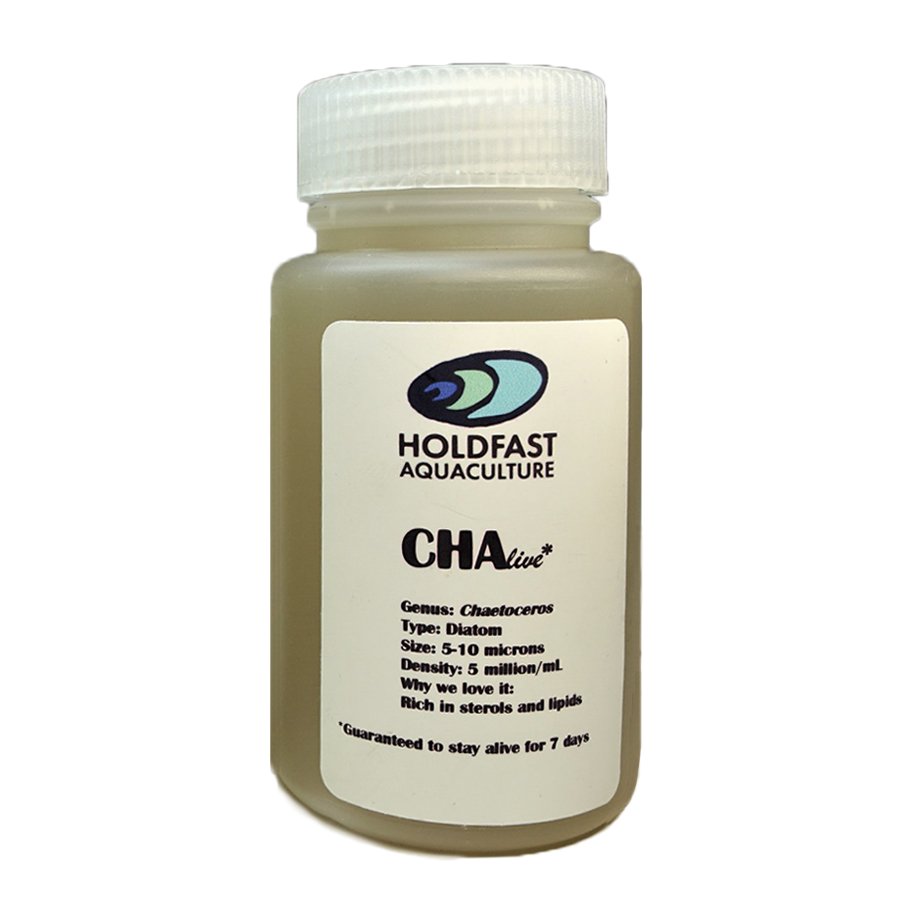
CHA Live — Holdfast Aquaculture
Genus: Chaetoceros Type: Diatom Size: 5-10 microns Density: 5 million/mL Why we love it: Rich in sterols and lipids *Guaranteed to stay alive for 7 days upon arrival 10% discount for pick-up and bottle refill orders.
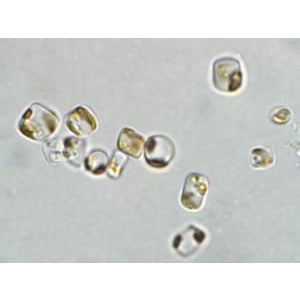
Algae Research Supply: Algae Culture Thalassiosira pseudonana
Thalassiosira is a marine diatom that is used in aquaculture and home aquariums to feed corals and clams.
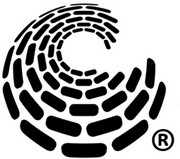 algaeresearchsupply.com
algaeresearchsupply.com
Isochrysis galbana (T-Iso)
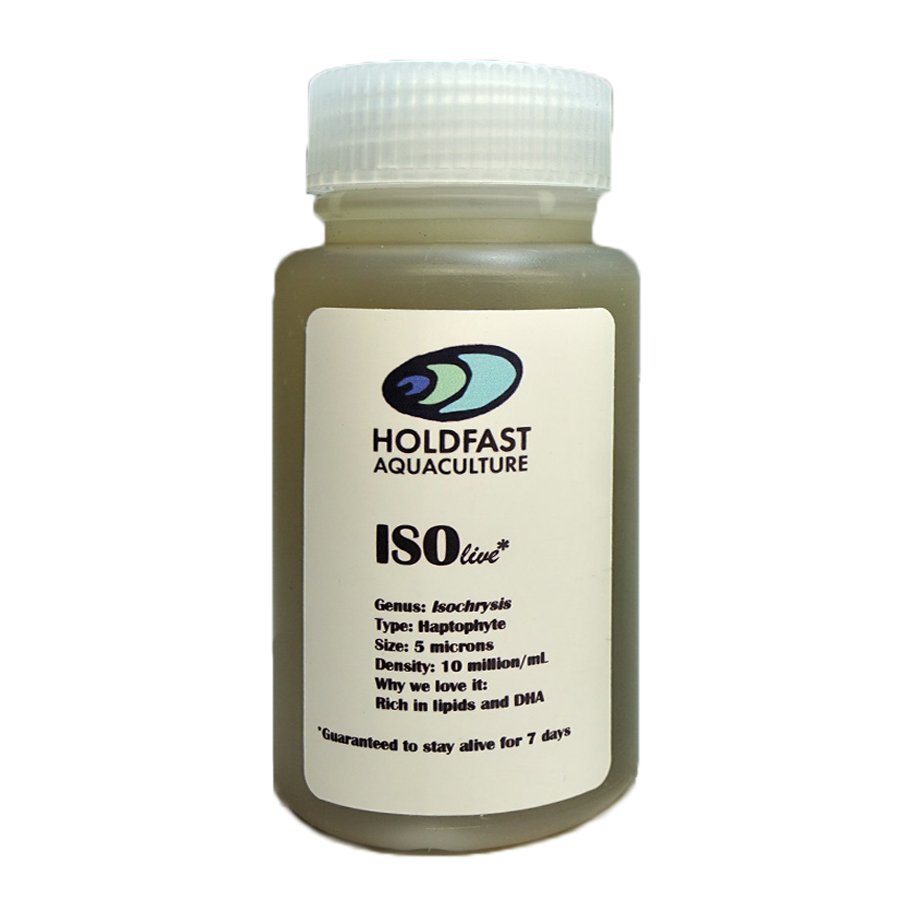
ISO Live — Holdfast Aquaculture
Genus: Isochrysis Type: Haptophyte Size: 5 microns Density: 10 million/mL Why we love it: Rich in lipids and DHA *Guaranteed to stay alive for 7 days upon arrival 10% discount for pick-up and bottle refill orders.
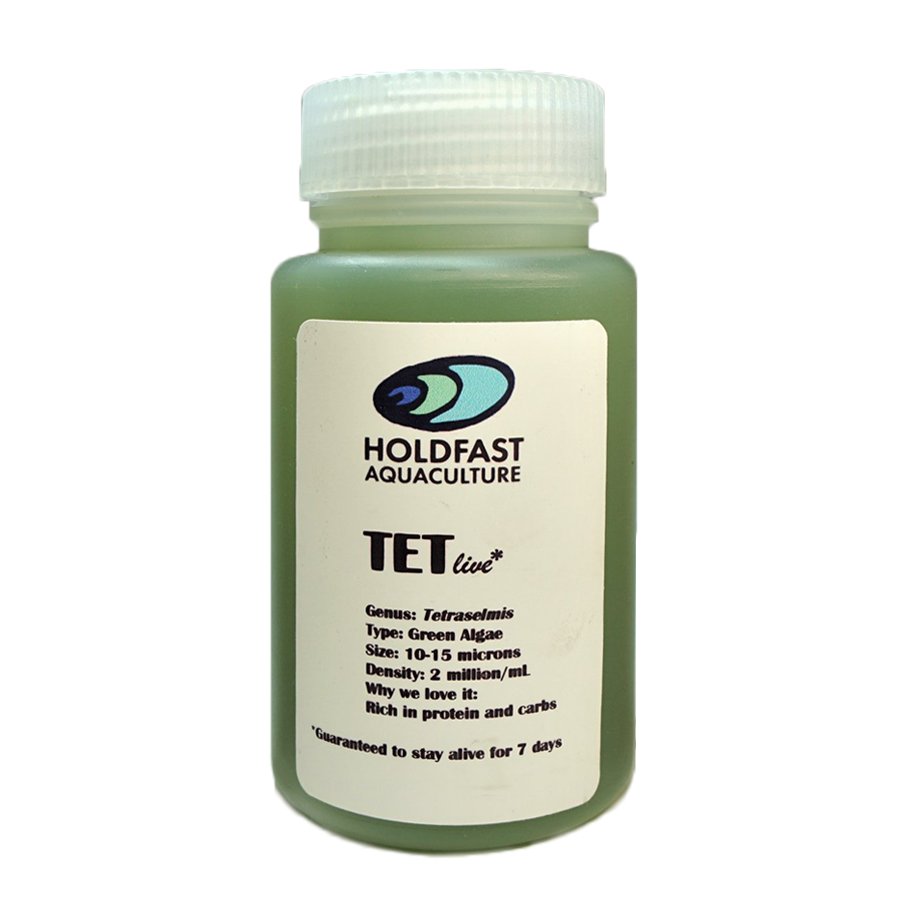
TET Live — Holdfast Aquaculture
Genus: Tetraselmis Type: Green alga Size: 10-15 microns Density: 2 million/mL Why we love it: Rich in proteins and carbohydrates *Guaranteed to stay alive for 7 days upon arrival 10% discount for pick-up and bottle refill orders.
P.s. Glad to hear that your tank is doing well! Also, without seeing a pic I can't say for sure, but the description "flat round rock sucker things" sound like either limpets or chitons.
Edit: Also, just in case the dinoflagellates are important dietary component too, here's a readily available non-toxic genus (Pyrocystis spp.):
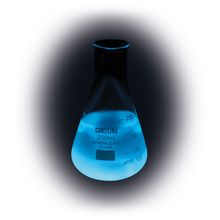
Bioluminescent Dinoflagellates, Living
Genus and Species: Pyrocystis sp. Optimal Medium: Bioluminescent Dinoflagellate Optimal Temperature: 22° C Optimal Light: High (200 to 400 foot-candles) Motility: Flagellum Classification: Dinoflagellates
www.carolina.com
Our Educational Products
seafarms.com
Also I have been meaning to ask about something related to sand crabs I can't find anything online about. So there are the common sand crabs with an oval like shape, very hard, no claws just digging legs and swimming legs and stuff. But then there are the other sand crabs, that can get like 10x the size as the common ones and they have a sharper more crawfish like shape like a crawfish kinda but more squished and without the tail kind of they are the same color but they have claws too, the claws pinch really hard and are shaped weird compared to normal crabs. Then there are the white ones, the white ones have an extra brittle shell and have this white shell but if you look closely you can see all the colors of the rainbow in it and its extra reflective. The white ones are extra rare and I only found one pdf about them after hours and hours of searching I have it on my broken laptop. Now I cannot access it anymore but I thought to ask you about these strange sand crab variants and I saw a little species branch picture of them where there are alot of different cool variants including a red one. I have attached a few images from google showing the common one, the rare claw one, and I could not find an image of the rare white one.1: Probably - as long as it doesn't have a bunch of random chemicals added, it's most likely fine (just make sure your ammonia and nutrient levels stay in check).
2: I'm not entirely sure - these aren't typically kept in aquariums (at least not successfully) because they live in the swash zone of the beach, but in they wild seem to eat diatoms, dinoflagellates, radiolarians, foraminifera, spicules (presumably from sponges), microalgae, bacteria, and (presumably) some zooplankton too (these are all tiny foods). I'm not sure what from that wild diet is necessary for them nutritionally, so they might specific foods, or they might not; and the food debris and algae might be enough, or it might not (and they may or may not be able to eat it effectively, as they use the waves to assist with their eating in the wild).
From what I've read, I would assume diatoms are the main thing in their diet, so I'd assume they would be the most important thing to feed (I'll list some good, readily available diatom species at the bottom - these species are good foods for a lot of clams and other bivalves too). That said, based on larval rearing diets (i.e. based on what is fed to raise the baby mole crabs successfully), I'd guess they would appreciate having some meaty foods too. So, as long the debris getting blown around your tank is small enough, that may potentially be useful for them too.
If they're popping in and out of the sand, that may be a good thing for feeding purposes - hopefully they'll do well for you long-term!
(All the feeders below would need to be cultured to be dosed regularly without becoming too expensive; culturing them can be a bit tricky, but some are simpler than others. They are all also available from more places than just the sites linked with them.)
The diatoms:
Chaetoceros spp.
Thalassiosira spp.
CHA Live — Holdfast Aquaculture
Genus: Chaetoceros Type: Diatom Size: 5-10 microns Density: 5 million/mL Why we love it: Rich in sterols and lipids *Guaranteed to stay alive for 7 days upon arrival 10% discount for pick-up and bottle refill orders.www.holdfastaq.com
Other feeders that may be helpful:
Algae Research Supply: Algae Culture Thalassiosira pseudonana
Thalassiosira is a marine diatom that is used in aquaculture and home aquariums to feed corals and clams.algaeresearchsupply.com
Isochrysis galbana (T-Iso)
Tetraselmis spp.
ISO Live — Holdfast Aquaculture
Genus: Isochrysis Type: Haptophyte Size: 5 microns Density: 10 million/mL Why we love it: Rich in lipids and DHA *Guaranteed to stay alive for 7 days upon arrival 10% discount for pick-up and bottle refill orders.www.holdfastaq.com

TET Live — Holdfast Aquaculture
Genus: Tetraselmis Type: Green alga Size: 10-15 microns Density: 2 million/mL Why we love it: Rich in proteins and carbohydrates *Guaranteed to stay alive for 7 days upon arrival 10% discount for pick-up and bottle refill orders.www.holdfastaq.com
P.s. Glad to hear that your tank is doing well! Also, without seeing a pic I can't say for sure, but the description "flat round rock sucker things" sound like either limpets or chitons.
Edit: Also, just in case the dinoflagellates are important dietary component too, here's a readily available non-toxic genus (Pyrocystis spp.):

Bioluminescent Dinoflagellates, Living
Genus and Species: Pyrocystis sp. Optimal Medium: Bioluminescent Dinoflagellate Optimal Temperature: 22° C Optimal Light: High (200 to 400 foot-candles) Motility: Flagellum Classification: Dinoflagellateswww.carolina.comOur Educational Products
seafarms.com
Yeah, so Sand Crabs/Mole Crabs come from the taxonomic Superfamily Hippoidea. That Superfamily contains three Family groups: the Albuneidae, the Blepharipodidae, and the Hippidae.
Normal/Common sand crabs (like the one in the pic below) are from the Hippidae family (most people think of the Emerita genus when they think of sand crabs - the one in your pic below is Emerita analoga, the Pacific Mole Crab).
Typically with crustaceans (like mole crabs, shrimp, etc.), any variants are going to be different species.
Normal/Common sand crabs (like the one in the pic below) are from the Hippidae family (most people think of the Emerita genus when they think of sand crabs - the one in your pic below is Emerita analoga, the Pacific Mole Crab).
The crawfish-like sand crabs are from the Blepharipodidae family. The one in the pic below is Blepharipoda occidentalis, the Spiny Mole Crab.
Without a pic of the white one, I can't say for sure, but I'd guess it's from the Albuneidae family.
Typically with crustaceans (like mole crabs, shrimp, etc.), any variants are going to be different species.
also I noticed that the spiny one is way better bait then the common one and got bit almost instantly after casting while the common ones take minutes or hoursYeah, so Sand Crabs/Mole Crabs come from the taxonomic Superfamily Hippoidea. That Superfamily contains three Family groups: the Albuneidae, the Blepharipodidae, and the Hippidae.
Normal/Common sand crabs (like the one in the pic below) are from the Hippidae family (most people think of the Emerita genus when they think of sand crabs - the one in your pic below is Emerita analoga, the Pacific Mole Crab).
The crawfish-like sand crabs are from the Blepharipodidae family. The one in the pic below is Blepharipoda occidentalis, the Spiny Mole Crab.
Without a pic of the white one, I can't say for sure, but I'd guess it's from the Albuneidae family.
Typically with crustaceans (like mole crabs, shrimp, etc.), any variants are going to be different species.
I think they probably have more spinal fluid because thats the main scent that attracts them or maybe its because they are really white which white sand crabs get hit more because white sand crabs are soft shells and the whiter they are the easier they are to eat
I put the last few creatures into my tank, a few sand crabs and baby sand crabs with eggs along with my hermit crab and the striped shore crab a few months ago. My filter stopped working so I took it out and put a tarp over my tank. I kinda forgot about it. It has been a few months and the bubbler is still going strong. I checked inside and there was thick algae covering the walls of the tank. I got some motivation and I scrubbed the algae film off and extracted it from the tank. I did a water test and all the parameters are... Perfect. All the ammonia, nitrites, and nitrates are at 0. How could this be? idk. I looked for my creatures and there are a bunch of sand crabs, smaller than the ones I initially put in. As well as a sand crab molt on the sand. The hermit crab is still well and I fed it a shrimp. the rock was unrecognizable due to the algae so I flipped it over to show the clean side and eventually the bottom of it will be clean and when the top gets dirty ill flip it again. I revived the filter and put it back in. The water level has dropped by over 60%. The saltiness is probably high. It seems all the creatures have adapted to it. I will have to slowly add distilled water and do water changes with ocean water in small percentages in order to get it back to normal. I still don't have cooling for the tank but thats really not in my control. I might go to the beach today and get some clams (hermits favorite food). I don't know if anyone is still in this thread but I felt the need to give and update. oh right idk where the striped shore crab was I couldn't find it and there wasnt a body
I’m still here (in fact, I was considering checking in here to see how things were going just a few days ago).
If you haven’t removed/cleaned up any of the salt buildup, then you should be able to just add the distilled water and fill up the tank that way to get your salinity back to normal levels. If you have removed/cleaned some of the salt buildup, then the plan you’re going with is probably the safest (just be sure to take it slow and steady).
Good luck getting the tank back on track - I’m rooting for you!
That’s unfortunate, but you’re not the first person to do that. Good, consistent care can be difficult/draining for people to provide over long periods of time in this hobby - but it’s also typically very rewarding when it is provided, so keep working at it!My filter stopped working so I took it out and put a tarp over my tank. I kinda forgot about it.
Assuming the tests are accurate and not using expired reagents or something, the tank is cycled and if it wasn’t being actively fed, then the ammonia levels probably never got too terribly high, so the bio-filter of the tank probably handled it just fine. The Nitrate is probably reading zero because of the algae buildup.did a water test and all the parameters are... Perfect. All the ammonia, nitrites, and nitrates are at 0. How could this be? idk.
Glad to hear a good amount pulled through and are doing well!looked for my creatures and there are a bunch of sand crabs, smaller than the ones I initially put in. As well as a sand crab molt on the sand. The hermit crab is still well and I fed it a shrimp.
If you can test the salinity or get it tested somehow, that could helpful here for ensuring you don’t raise the salinity too high or drop it too low as you’re getting the tank going again. If you can’t test the salinity, then I’d ask if you’ve cleaned/remove any salt buildup in the tank since you tarped it.The water level has dropped by over 60%. The saltiness is probably high. It seems all the creatures have adapted to it. I will have to slowly add distilled water and do water changes with ocean water in small percentages in order to get it back to normal.
If you haven’t removed/cleaned up any of the salt buildup, then you should be able to just add the distilled water and fill up the tank that way to get your salinity back to normal levels. If you have removed/cleaned some of the salt buildup, then the plan you’re going with is probably the safest (just be sure to take it slow and steady).
As long as it doesn’t get too hot for too long, it shouldn’t be an issue. If it does get too hot, then things like aiming a fan at the top of the water or floating ice in the tank (in containers like water bottles so the melting ice doesn’t mess up the salinity) can help.I still don't have cooling for the tank but thats really not in my control.
There’s a decent chance it died and was eaten/decomposed.oh right idk where the striped shore crab was I couldn't find it and there wasnt a body
Good luck getting the tank back on track - I’m rooting for you!
Didn't expect you to respond, tysm!I’m still here (in fact, I was considering checking in here to see how things were going just a few days ago).
That’s unfortunate, but you’re not the first person to do that. Good, consistent care can be difficult/draining for people to provide over long periods of time in this hobby - but it’s also typically very rewarding when it is provided, so keep working at it!
Assuming the tests are accurate and not using expired reagents or something, the tank is cycled and if it wasn’t being actively fed, then the ammonia levels probably never got too terribly high, so the bio-filter of the tank probably handled it just fine. The Nitrate is probably reading zero because of the algae buildup.
Glad to hear a good amount pulled through and are doing well!
If you can test the salinity or get it tested somehow, that could helpful here for ensuring you don’t raise the salinity too high or drop it too low as you’re getting the tank going again. If you can’t test the salinity, then I’d ask if you’ve cleaned/remove any salt buildup in the tank since you tarped it.
If you haven’t removed/cleaned up any of the salt buildup, then you should be able to just add the distilled water and fill up the tank that way to get your salinity back to normal levels. If you have removed/cleaned some of the salt buildup, then the plan you’re going with is probably the safest (just be sure to take it slow and steady).
As long as it doesn’t get too hot for too long, it shouldn’t be an issue. If it does get too hot, then things like aiming a fan at the top of the water or floating ice in the tank (in containers like water bottles so the melting ice doesn’t mess up the salinity) can help.
There’s a decent chance it died and was eaten/decomposed.
Good luck getting the tank back on track - I’m rooting for you!
so i was transporting a little striped shore crab via bucket in car and i gave him a rock so he could hide under so he could feel safe but when I got home he had a crack in his shell and he is very sluggish, can I heal him? (I believe he was under the rock when we were driving and some turbulence led to it bouncing giving the crab his injury) The crab is not dead and I am keeping him cool next to an ice bag in the water trying to get him back to his normal temperature from the water.
Similar threads
- Replies
- 10
- Views
- 372
- Replies
- 29
- Views
- 1,320
- Replies
- 26
- Views
- 504
- Replies
- 1
- Views
- 335
New Posts
-
-
-
A brand new Unique Corals Flashsale - Monday April 22nd 10am-6pm pst
- Latest: uniquecorals

















